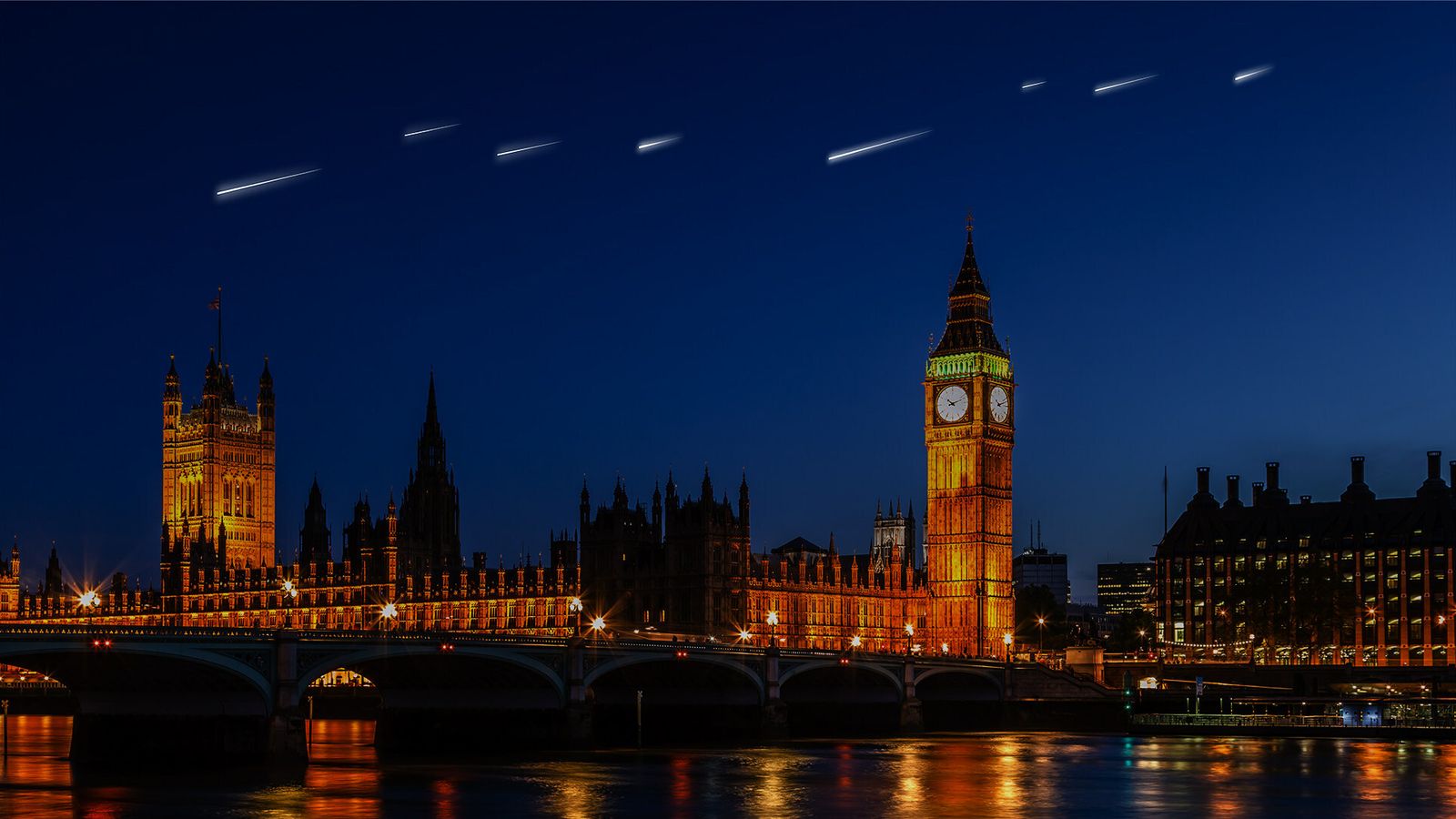A Tokyo-based space company, ALE, has announced it will create the world’s first artificial meteor shower in 2025 – producing man-made shooting stars that could be seen from the UK.
Named project Sky Canvas, the celestial light show will involve launching satellites up into space and deploying “space fireworks”.
The objective is entertainment on an unprecedented scale – but also to collect atmospheric data from the mesosphere, which developers at ALE hope will be vital to climate change research.
The largely unexplored mesosphere extends about 31 to 53 miles (50 to 85 km) above our planet – currently too high to be documented by weather balloons and aircraft, but too low to be reached by satellites.
Read more:
Northern Lights set to be visible in parts of Scotland tonight
The sun is ‘waking up’ – here’s why and what you need to know
Dr Lena Okajima, founder and chief executive of ALE, said: “Our aim is to contribute to the sustainable development of humankind and to bring space closer to all of us.
“We believe we can further our scientific understanding of climate change while also inspiring curiosity and interest in people all over the world about space and the universe.”
Ultramassive black hole around 33 billion times the mass of the sun discovered by UK astronomers
Cosmic explosion may be brightest ever seen, astronomers say
World’s first 3D-printed rocket makes launch debut – but fails to reach orbit
To the delight of its creators, experiments on the ground have been successful in producing multi-coloured shooting stars – but the company said it’s not possible to know yet if they can be produced in orbit.
The hope is that by studying the light emission and trajectory of each ‘star’, scientists can gather more information on wind speed and atmosphere composition.
Originally scheduled for 2020, the launch was delayed due to a satellite malfunction but is now back on track.
But how does it work?
Naturally, shooting stars occur when meteoroids (space dust and mini asteroids) enter the Earth’s atmosphere and burn up, leaving a bright trail of gas in their wake.
To recreate this, tiny metal-based pellets around 1cm in size will be sent up in satellites that will orbit the Earth before releasing them around 249 miles (400km) up.
The particles are expected to travel a third of the way around the world – that’s over 8,000 miles – before hitting the atmosphere at an altitude of 60-80 km and lighting up the night sky. The spectacle will be seen by thousands across different countries and possibly even in the UK.
ALE said it “hopes to give Brits and others all over the world the opportunity to view the world’s first live human-made meteor shower”.
The company also assured that it will “take all possible precautions” to make sure Sky Canvas doesn’t hit other man-made objects and increase space debris.








